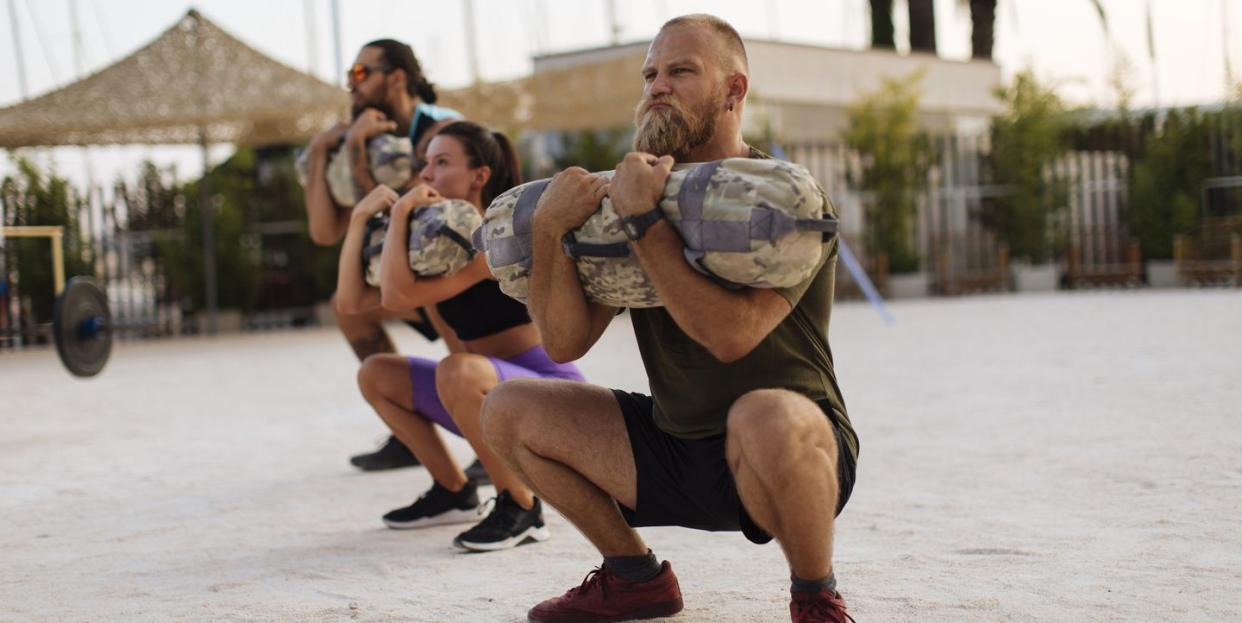A Training Sandbag Should Be Your Next Home Gym Pick

This is Your Quick Training Tip, a chance to learn how to work smarter in just a few moments so you can get right to your workout.
With the end of the Covid-19 pandemic in sight, you’re likely already anticipating your return to your gym and all of its glorious equipment. You'll finally once again have access to barbells with limitless plates, rows of benches and squat cages, rooms full of cardio machines, and racks upon racks of dumbbells with rubberized heads and textured grips. But if your gym doesn’t have sandbags, consider adding them to the home fitness arsenal you’ve built up during the past year.
Never trained with sand as your choice of resistance? There are a handful of reasons to start. Sand is cheap (you can pick up 50-pounds to use as filler for around five bucks at most home improvement stores), and much like iron, it’s heavy as hell.
But unlike barbells and dumbbells, sandbags are inherently unstable. Their center of mass shifts constantly as the sand moves within them, forcing your body to compensate by engaging a network of stabilizing muscles. The more muscles you work, the more muscle you build. The principle behind the training style is that simple, even if the workouts you'll do with the bags are anything but easy.
Plus, workout sandbags aren’t designed like conventional weights. The bags designed for training typically offer a handful of unique grip options, making them a convenient way to inject some variety into a stale routine.
Your move: Buy some workout sandbags or make your own, and then incorporate sandbag training into your weekly regimen.
While you can use them for conventional exercises such as the clean, front squat, and bent over row, they’re ideal for performing dynamic, full range of motion exercises like the rotational lunge and the around the world. Need more inspiration? This 15-minute sandbag workout will help you get fit in a hurry.

You Might Also Like